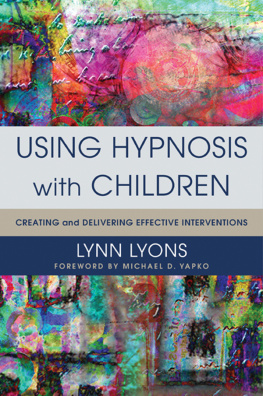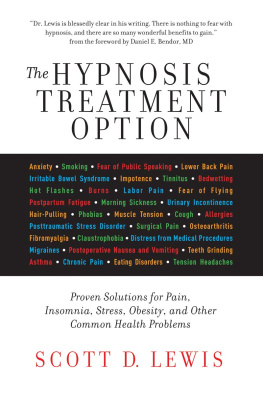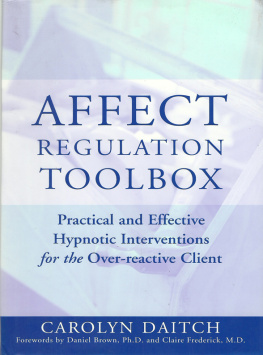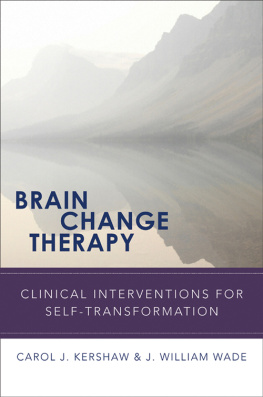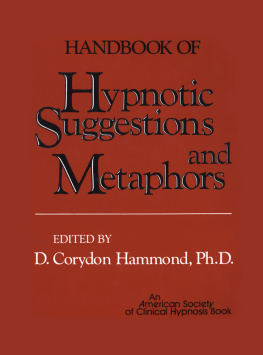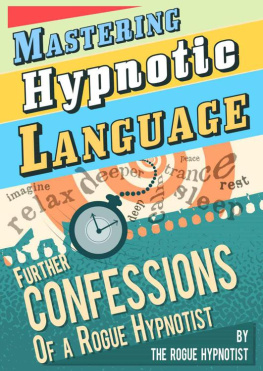
Using Hypnosis With Children
Creating and Delivering
Effective Interventions

Lynn Lyons
Foreword by Michael D. Yapko

W.W. Norton & Company
New York London
A Norton Professional Book
To my parents,
Ed and Cathleen Gerwig,
who listen to my stories.
K ids are struggling, and so are their parents, many of whom are learning the hard way that no matter how much bubble wrap they want to protectively cushion their child with, its not enough. Besides, the bubble wrap itself becomes part of the problem when an overprotected child is unprepared for the rude awakening he or she will have when discovering the world isnt going to protect him or her the way Mom or Dad did. Kids need support, information, and practical tools if they are to not only survive but thrive in todays complicated world.
While young people of every generation have inevitably had to face the ongoing challenges of life, in recent years these challenges have taken on new, unprecedented forms. These include school shootings, bullying and cyberbullying, virtual rather than real friendships, kids kidnapped right off the street and sexually abused or even murdered, families fragmenting, a fragile and unstable economy that leaves too many kids in poverty or close to it, and on and on. Young people face an intensity and complexity while just trying to grow up that not enough people truly understand to be of much help to them.
The mental health statistics reveal the consequences of these relentless stressors on our kids: millions of children are on psychiatric medications, especially antidepressants and antianxiety drugs that are themselves problematic because of their side effects and largely unknown effects on childrens neurological, physical, and social development; excessive caseloads in middle school, high school, and college counseling centers that struggle with a level of demand that far outweighs their collective supply; and kids just suffering in silence, ignored by adults who are much too busy to notice them until they act out, act up, or simply give up acting altogether and withdraw into despair.
With this superb book, psychotherapist and pediatric specialist Lynn Lyons offers genuine help to all those young peopleand their familiesso desperately in need. Lyons possesses an infectious optimism, a persuasive you can do it! attitude that Im confident therapists can absorb and share with their young clients. Its a powerful attitude that can set the foundation for absorbing the meaningful growth Lyonss practical methods can catalyze.
On the surface, this is a book about integrating clinical hypnosis into ones treatment of children and adolescents. On just that level alone, this book succeeds in a very big way, for Lyons teaches us with clarity and skill the artistry of constructing and delivering therapeutic hypnosis sessions with kids for many of the most common problems they face. She reviews salient clinical literature and shares it in a clear and compelling way. She carefully emphasizes the absolute necessity of adapting ones hypnosis sessions to the uniqueness of each child, including his or her developmental considerations, interests, experiences, hopes, important relationships, and more. Beyond that, Lyons provides plenty of clear and instructive examples of what to actually say before, during, and after hypnosis sessions, sharing her knowledge and artistry most generously. Her ability not just to do hypnosis but also to be hypnotic is nothing short of inspiring, for the delivery style and specific language she uses and teaches so skillfully serve as a true role model of what good therapy utilizing hypnosis can look like and ultimately achieve. Lyons provides current and convincing examples of why its so important for therapists to pay attention to attention, a core component of both hypnosis and effective living.
Beneath the surface, this book is about much more than pediatric hypnosis. Its about empowering young people to begin to develop some vision and the skills to bring those visions to fruition. Lyons is consistent in her key messages embedded throughout the book: kids are capable of more; kids have innate resources to be tapped into and directed toward meaningful goals; kids are much more than their symptoms or their diagnosis; and kids are naturally oriented toward growth, especially evident when therapists and others provide the means and support for facilitating that growth. So much of what Lyons describes in this book is ways to use language and relationship to get these key messages across to young people so desperate to hear and absorb them.
Lyons is a realist. She makes it crystal clear how critically important it is to work not only with kids, but also with their families. In that sense, this book is as much about the skills of effective parenting as it is about conducting hypnosis sessions with young people. Lyons provides many compelling examples of the kinds of suggestions that support parents but also challenge them to be deliberate in soothing and inspiring their children. This is a wonderful gift that will undoubtedly keep on giving over the familys lifetime.
Pediatric hypnosis is a specialty in its own right and Lynn Lyons is one of its leading advocates. Interest in pediatric hypnosis has been steadily increasing in recent years as more and more practitioners recognize the need for specialized approaches to treating children as well as the value of hypnosis as an empowering treatment approach. Empowering children to use their imaginations and creatively solve problems, develop life-enhancing skills, and think and act more effectively are critically important benefits of employing hypnosis. Lyons provides a solid consideration of practical issues associated with applying hypnosis from how and when to introduce it to how to structure sessions for maximum benefit. Lyons has written an excellent how-to book that fulfills its promise to make therapists better at doing therapy when they learn and apply the hypnotic approaches she describes.
Lynn Lyons has made an enormously valuable contribution to a too-small body of literature on the subject of pediatric hypnosis. Her expertise is apparent on every page and we are fortunate she shares it so generously. I hope and expect this book will be widely read and thoughtfully considered, and as a result will prompt more child and adolescent psychotherapists to pursue training in clinical hypnosis. Kids urgently need the help that these gentle and empowering methods can provide.
Through this book, Lynn Lyons has given us the gift of a compelling vision of how thoughtful words can heal. Perhaps best of all, she has given every therapist who works with kids a chance to share in that vision.

I f you work with children in one of the many helping professions, then you help families find solutions. As a therapist or guidance counselor, you help anxious, depressed, or confused kids navigate all sorts of family, social, and school-related challenges. If youre in the medical field, children and parents look to you to diagnose and treat their illnesses and injuries, alleviate their suffering, and help them recover and feel better.
Sometimes these struggling children and their parents come to you in a heightened state, worried or unsure or angry, spinning with thoughts and feelings and even conflict as they work to understand whats happening and how to fix it. And sometimes they arrive exhausted and skeptical. Theyre still searching, but the pace has slowed. The frenetic spin of whats wrong? has moved toward the deflated shrug of why bother? In either case, the goal is to help discover, create, and then use the resources they need to get back on track. There are many different ways to achieve this. The book you are holding focuses on one of them: hypnosis.
Next page
